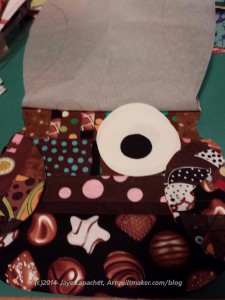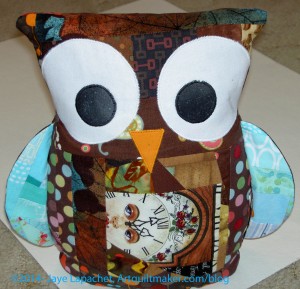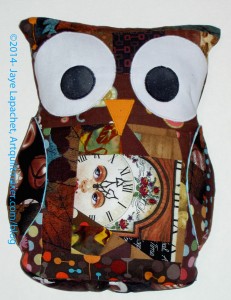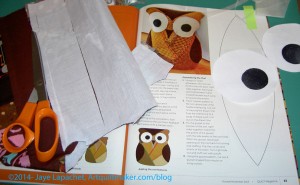 Flip Dolls & Other Toys That Zip, Stack, Hide, Grab & Go by Laura Wilson
Flip Dolls & Other Toys That Zip, Stack, Hide, Grab & Go by Laura Wilson
The toys in this book are really imaginative. Making some or all of them would really add some fun to the creative toy box of a child in your life. This is one of the books that I gave away in November’s Black Friday Sew-in, but didn’t really get a chance to look at. Shannon at Lark was able to send me a copy. Thanks to Lark Crafts for sending this book to me to review.
I can imagine an aunt or uncle making the characters in this book and sending them, one at a time, to a niece or nephew. The other wonderful thing about the creatures in this book is the opportunity for adding texture, as in fabric texture, to a child’s life.
If you have no children in your life that should not deter you from this book. Toys on your desk at work draw people in to talk, collaborate, shoot the breeze. Flip dolls, which seem to not really be readily available, are a twofer. Two toys in one and an additional spur to the imagination in children and adults.
Like many of Lark’s books, this one starts with a “Getting Started” (pg.10) section that includes tools, materials, basic techniques, special skills, and customizing. There are sidebars, two of which caught my attention, “The History of Flip Dolls (you know I love history!) and age appropriateness. I noticed, throughout the book, that the author discusses modifications to accommodate the ‘mouthiness’ of smaller children. All of the sections have a description for each entry. For example, there are three kinds of scissors listed in the tools section. Wilson writes a few lines about why you need each, e.g. no cutting paper with your fabric scissors! The section is illustrated by photographs and whimsical drawings. It also includes the basic shape and some examples of how to modify it to create different creatures.
Following the introductory section are three additional sections, which provide the projects in ever increasing difficulty. The sections are Zip & Stack, Hide, Seek & Go, and Flip & Turn.
All of the projects have a difficulty rating and it took me a minute to understand how they were coded. The arrows were a little confusing, but I got with the program quickly.
Some of the cleverness of the projects shows up in the section. The Cheshire Cat has a pocket in the back with additional mouth pieces (lips, mustache, etc) that add to the fun of this toy. My favorite project in the Zip & Stack section has to be the Smiling Crocodile. I LOVE the zipper for the mouth. There are brief instructions for shortening a zipper and also a good description of installing a zipper.
On many of the projects there is opportunity for your own creativity. The wings of the flying horse could have sparkly embroidery floss, the plates on the shell of the turtle could have embroidered outlines.
In the Hide, Seek & Go section, the Winged Horse could do double duty as a regular horse as the wings are removable. I also like the front panel of the Nuts & Bolts Robot, which provides additional opportunity for creativity.
Finally, the Flip & Turn section has the flip dolls. There is a caterpillar and butterfly combination, George & the Dragon (you might need two so some actual swordplay could happen!), and the Owl and the Pussycat. With the directions, I can see a lot of other flip dolls: Red Riding Hood, Cinderella and Snow White with the Wicked Queen under her skirt as a few examples.
The one small thing I didn’t like about the book was the materials used. This is a small thing and easily remedied. I wasn’t fond of the fabrics from which the projects were made. I thought they were too subtle and old fashioned looking. As I said, that is easily remedied by using your own fabrics. Also, I would have liked to have seen some tiny red beads standing in for blood drops on the vampire (pg.25). Looking at finished objects made from fabric in a book is much different than feeling the item in person.
Templates are at the back and have to be enlarged, so plan ahead. No late night runs to the copy store!
I like this book because it is different. The projects are not your usual run of hte mill projects. The toys are clever and inspire the imagination. I also see the spark that can lead to readers jumping off and taking the ideas to different levels. Take a look at the book and enjoy!
View all my reviews, especially the Stuffed Animals review as I think it and this review will work together very well.





